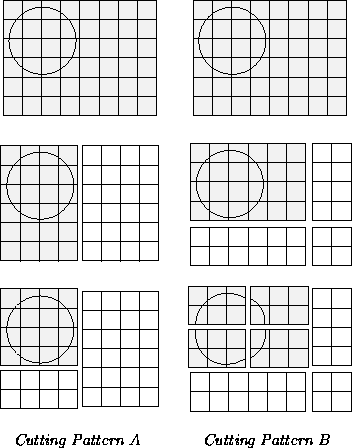
The efficiency of the super-pixel method depends on the cuts performed. Compare the following two cutting patterns:

Cutting pattern A has produced more information than cutting pattern B, with fewer cuts and fewer interval evaluations. An optimal cutting pattern may be determined, but would take far more resources than rendering the graph with a simple cutting pattern. After rendering a graph with cutting pattern P, an improved cutting pattern P' may be deduced.
This improved cutting pattern P' may be useful when rendering a similar graph, or when rendering the same graph again. The pattern P' may require less storage than the rendering R, so it may be preferable to store the cutting pattern P' in place of the rendering R. Portions of R may be rendered on demand, using the stored cutting pattern. A sophisticated approach is to store large uniform stretches of R as a cutting pattern but store the intricate details of R directly, to speed later re-rendering. Regardless, an initial cutting pattern must be decided; cutting heuristics guide this decision.
The information already created while rendering is used by the cutting heuristics to determine the next cut. There is no optimal set of heuristics; a heuristic is designed by assuming the graph has certain properties. If the graph does have those properties, application of the heuristic will likely speed the rendering process; if not, application of the heuristic will likely hinder the rendering process.
| Jeff Tupper | March 1996 |